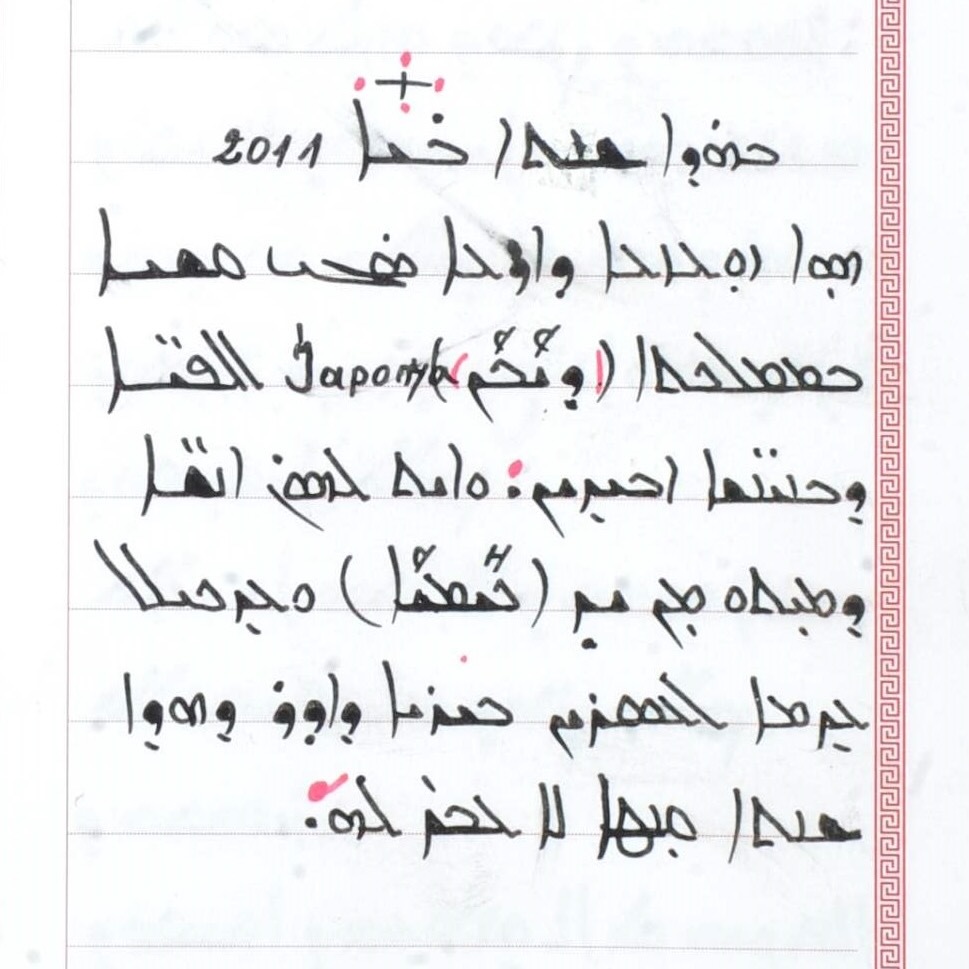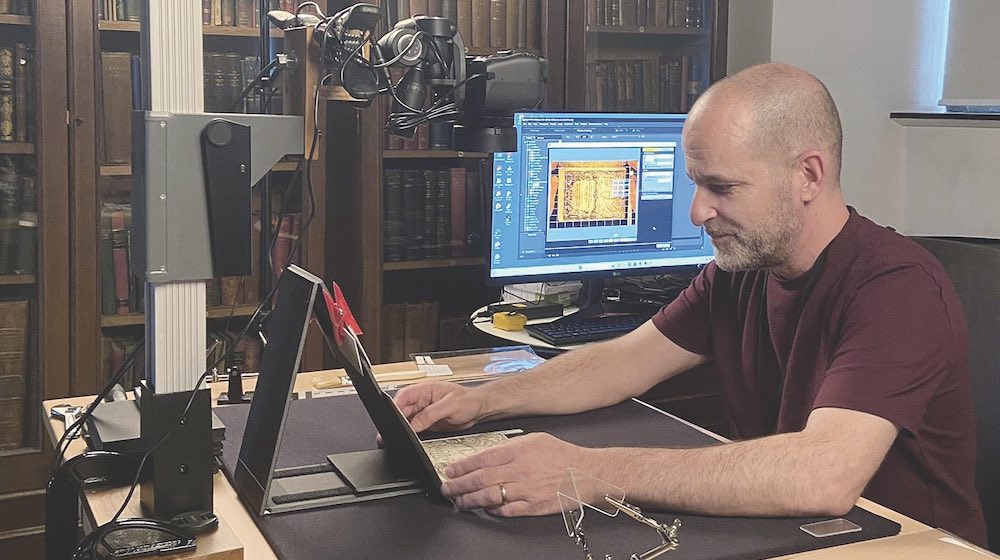The Frozen Tigris And Other Remarkable Weather Events Described In Syriac Colophons
The Frozen Tigris and Other Remarkable Weather Events Described in Syriac Colophons
February 29, 2024This story is part of an ongoing series of editorials in which HMML curators and catalogers examine how specific themes appear across HMML’s digital collections. From the Eastern Christian collection, Dr. James Walters has this story about Weather.
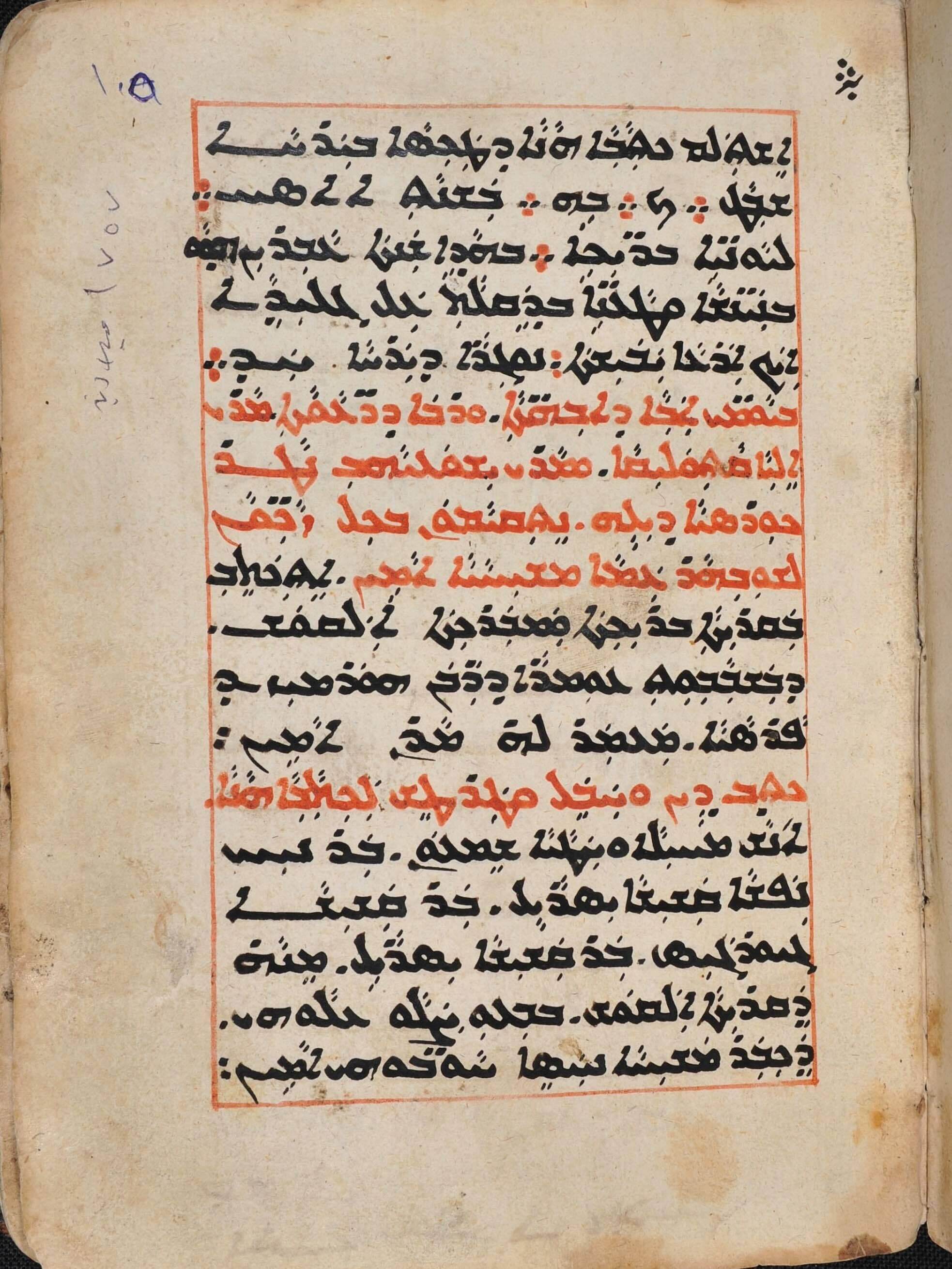
In the days before social media, phones, and blogs, how did people share their experiences of noteworthy weather phenomena? For at least one scribe who lived in Iraq, there was one weather event worthy of preserving for history in the form of a colophon note.
The note is in manuscript ACK 00053, now in the library of the Chaldean Catholic Church, Archdiocese of Kirkuk, Iraq. The manuscript was completed on February 20, 1757 CE. Thanks to the colophon, located on folio 105r, we know that the scribe’s name was Shemʿon and that he copied the manuscript in the city of Alqūsh, Iraq.
When Shemʿon recorded the date of copying, he also included the following intriguing note to the reader:
Text:
ܒܗܕܐ ܫܢܬܐ ܥܒܪܝܢ ܗܘܘ ܒܢܝ̈ܢܫܐ ܘܛܥ̈ܢܐ ܒܕܩܠܬ ܥܠ ܓܠܝܕܐ ܐܝܟ ܐܪܥܐ ܝܒܝܫܬܐ ܢܘܓܪܐ ܕܝܪܚܐ ܚܕ
Translation:
“In this year [2068 AG/1757 CE], people and cargo crossed over the Tigris River upon ice as if it were dry land for the duration of one month.”
The historic Tigris River—known as one of the borders of the ancient region of Mesopotamia and the lifeblood of the Fertile Crescent—begins in the Taurus mountains of Turkey and flows through Iraq, ultimately emptying into the Persian Gulf.
Given the typical climate around the river, it may be somewhat surprising to learn that the Tigris River can, in fact, freeze over. While certainly a rare occurrence, there are also other, more recent reports of the Tigris freezing, such as this account published in 1909 CE by Mrs. M. E. Hume-Griffith:

This 20th-century account of winter conditions includes a photograph of boats lined up to form a bridge across the frozen Tigris:
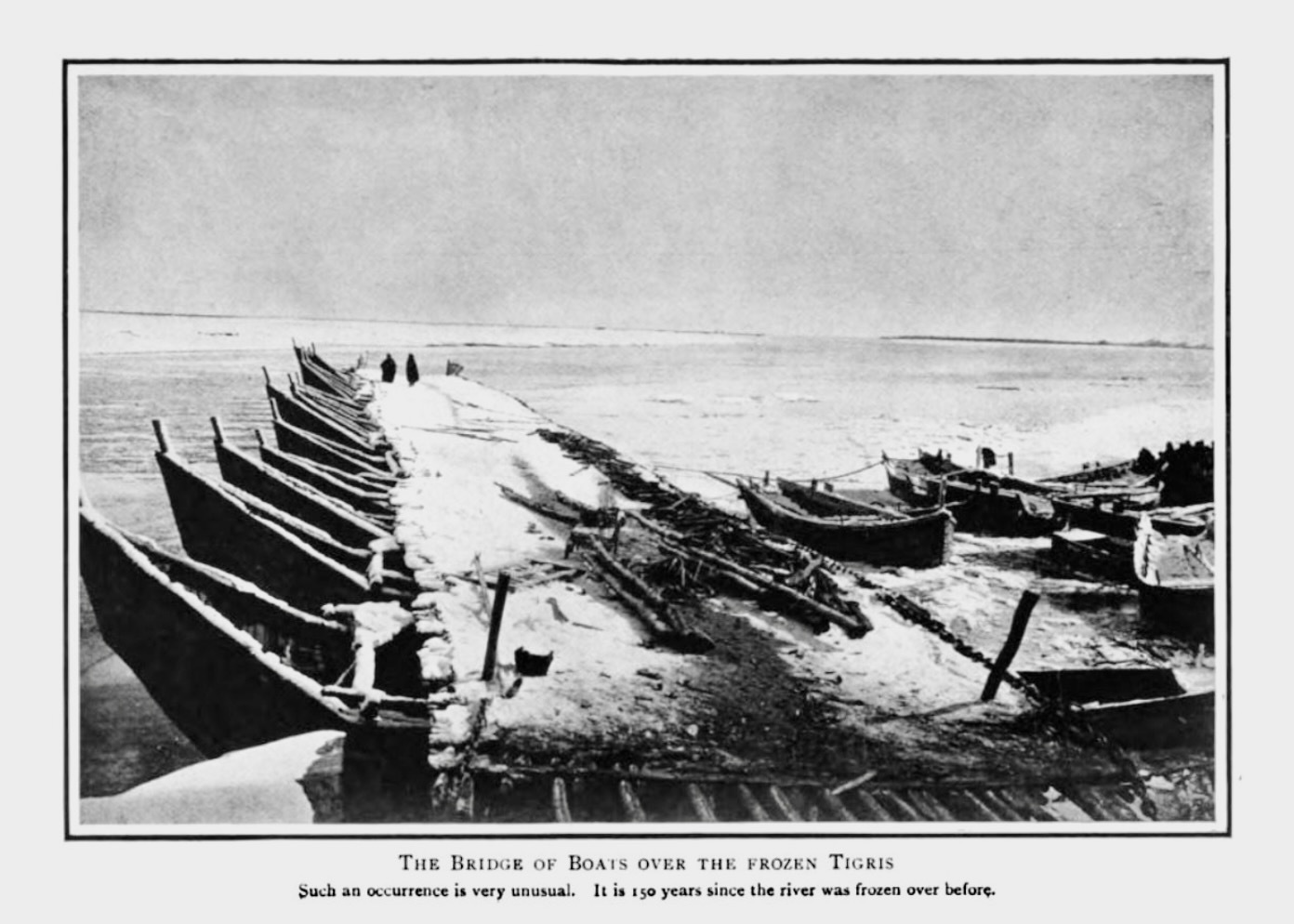
The caption to the picture, provided by Hume-Griffith, says that it had been “150 years” since the last time the Tigris had frozen over (presumably according to local accounts). This reckoning provides some secondary support for the colophon note in ACK 00053. While Hume-Griffith’s account does not give a specific date for when she experienced the Tigris freezing over, her book was published in 1909 and covers the eight years prior, which she spent living in the Middle East. So, 150 years prior to Hume-Griffith’s account would correspond to some point in the 1750s. Shemʿon’s note in ACK 00053 identifies the Tigris as freezing in 1757 CE.
It is remarkable to have a first-hand account of such a unique weather event from the mid-18th century. Yet, while certainly rare, similar notes from other manuscripts provide glimpses of climate-related history. For example, the colophon of MSBSOCQ 00038—in the collection of Mar Sarkis and Bakhos Syrian Orthodox Church, Qarah Qūsh, Iraq—is dated to 1742 CE and includes the following note:
Text:
ܘܒܗ ܒܫܢܬܐ ܚ ܝܘܡ̈ܬܐ ܒܐܝܠܘܠ ܝܪܚܐ ܢܦܠܬ ܢܘܪܐ ܡܢ ܫܡܝܐ ܘܝܩܕܝ ܬܫܥ ܣܦ̈ܝܢܐ ܕܬܚܬ ܓܫܪܐ ܕܥܠ ܢܗܪܐ ܕܩܕܡ ܡܘܨܠ
Translation:
“And in the same year [1742 CE] for eight days in the month of September fire fell from the sky and burned nine ships that were under the bridge over the river in front of Mosul.”
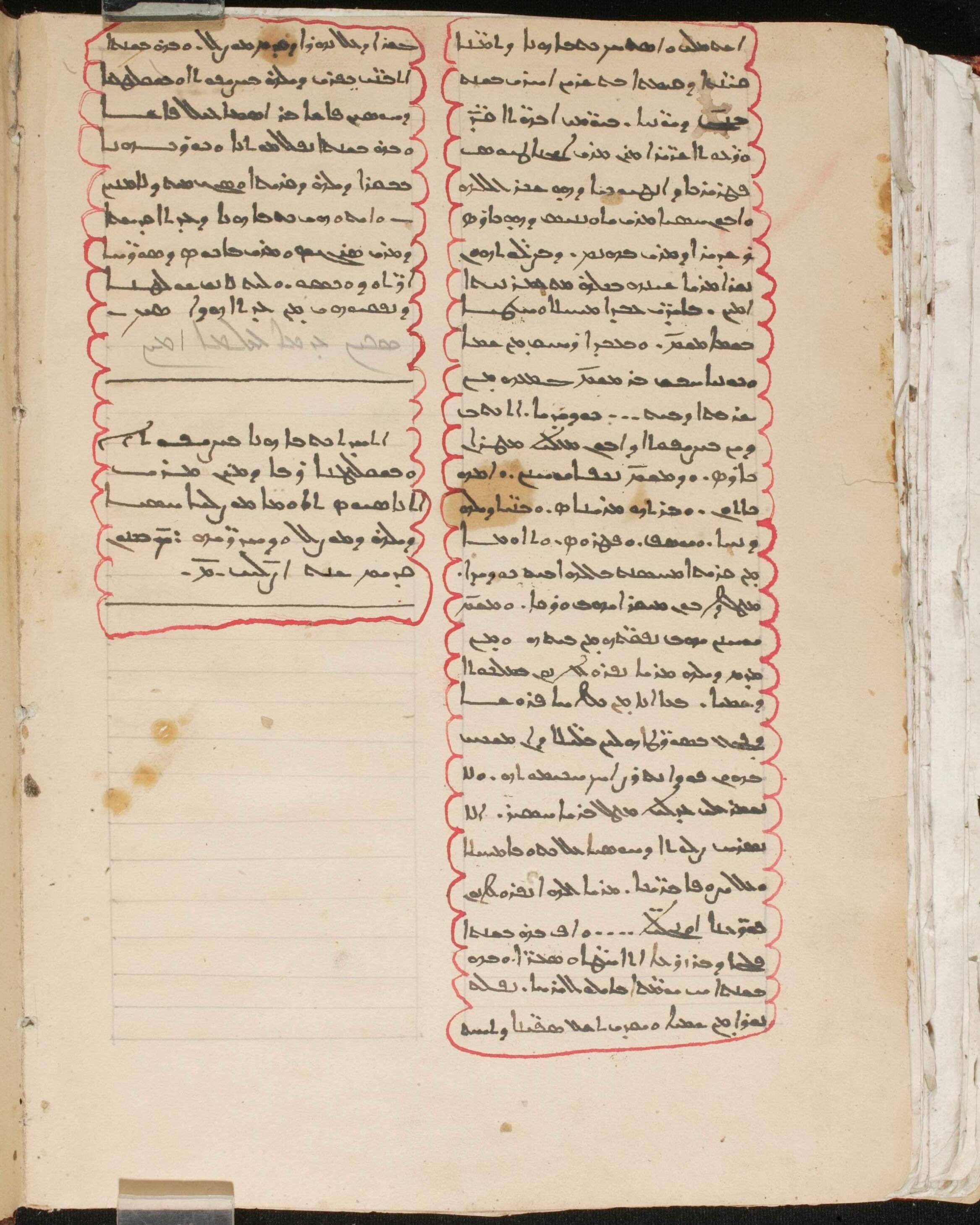
Unfortunately, the scribe does not provide any more details about this event, but it is tantalizing to think about what exactly this “fire that fell from the sky” might have been. It’s possible that there were meteorites that took the form of fireballs or that some other similar meteorological event occurred.
It’s worth pointing out that, while both of these manuscript examples are from the mid-18th century, the practice of recording significant weather events in Syriac colophons continues even into the very recent past. In PLM SH 00006—a manuscript in the Private Library of Samuel Hadodo, Turkey, Midyat, copied just 13 years ago in 2011 CE—the scribe (Samuel Hadodo) records the following note:
Text:
ܒܗܕܐ ܫܢܬܐ ܒܝܐ ܗܘܐ ܙܘܥܙܥܐ ܕܐܪܥܐ ܣܓܝ ܩܫܝܐ ܒܡܡܠܟܬܐ ܕܝܒܢ ܐܠܦܝ̈ܐ ܕܒܢܝ̈ܢܫܐ ܐܒܝܕܝܢ. ܘܐܝܬ ܠܗܘܢ ܐܢܫ̈ܐ ܕܡܝܬܘ ܡܢ ܝܕ (ܟܝܡܝܐ) ܘܥܕܟܝܠ ܥܕܡܐ ܠܥܣܪܝܢ ܒܝܪܚܐ ܕܐܕܪ ܕܗܕܐ ܫܢܬܐ ܩܢܛܐ ܠܐ ܥܒܪ ܠܗ.
Translation:
In this year, 2011, there was a violent disturbance of the land of great magnitude in the country of Japan, destroying thousands of people, and even until the 20th of the month of March, the fear has not been removed that there are more people who died.
This colophon refers to the terribly destructive earthquake and tsunami that struck Japan in March 2011, killing a total of around 20,000 people. This event is likely much more well known to modern readers, in part because of the proximity of the event, the magnitude of devastation, and the broader reach of global communication.
Typically, observations about the weather fall into the category of “small talk”—the kinds of conversations we have every day—so they might not strike us as unique or particularly interesting. Other large weather events—such as traumatic floods, blizzards, and droughts—become part of collective memory, passed on through individual experiences. In both cases, when those everyday observations are recorded for posterity, they can become valuable sources of information for future generations.
